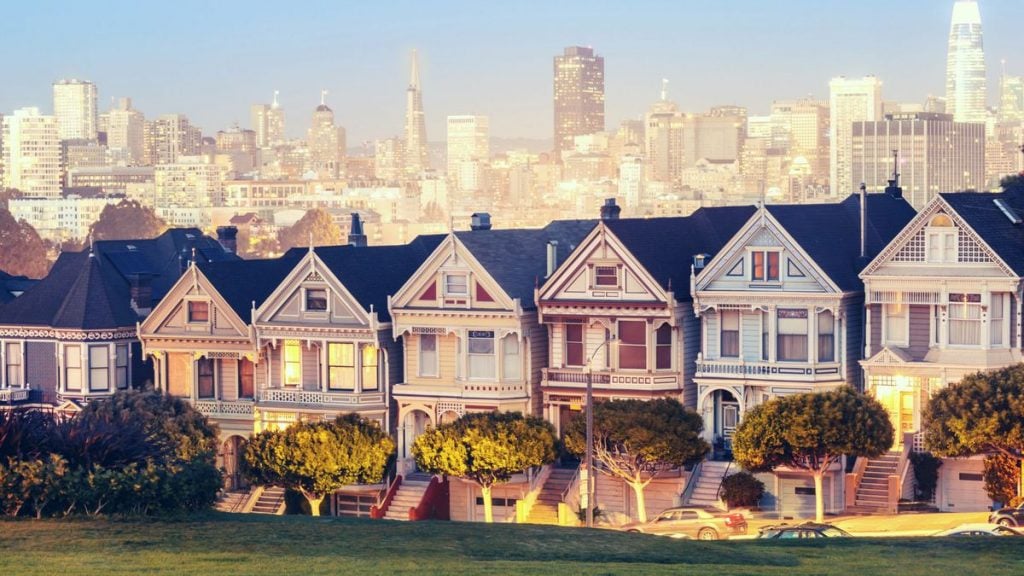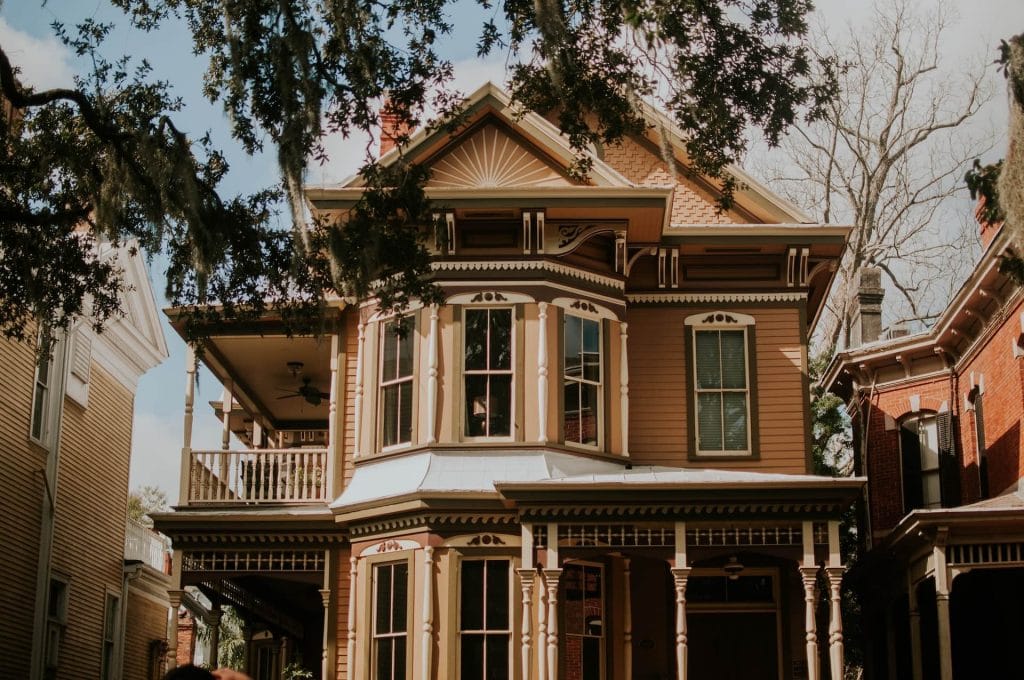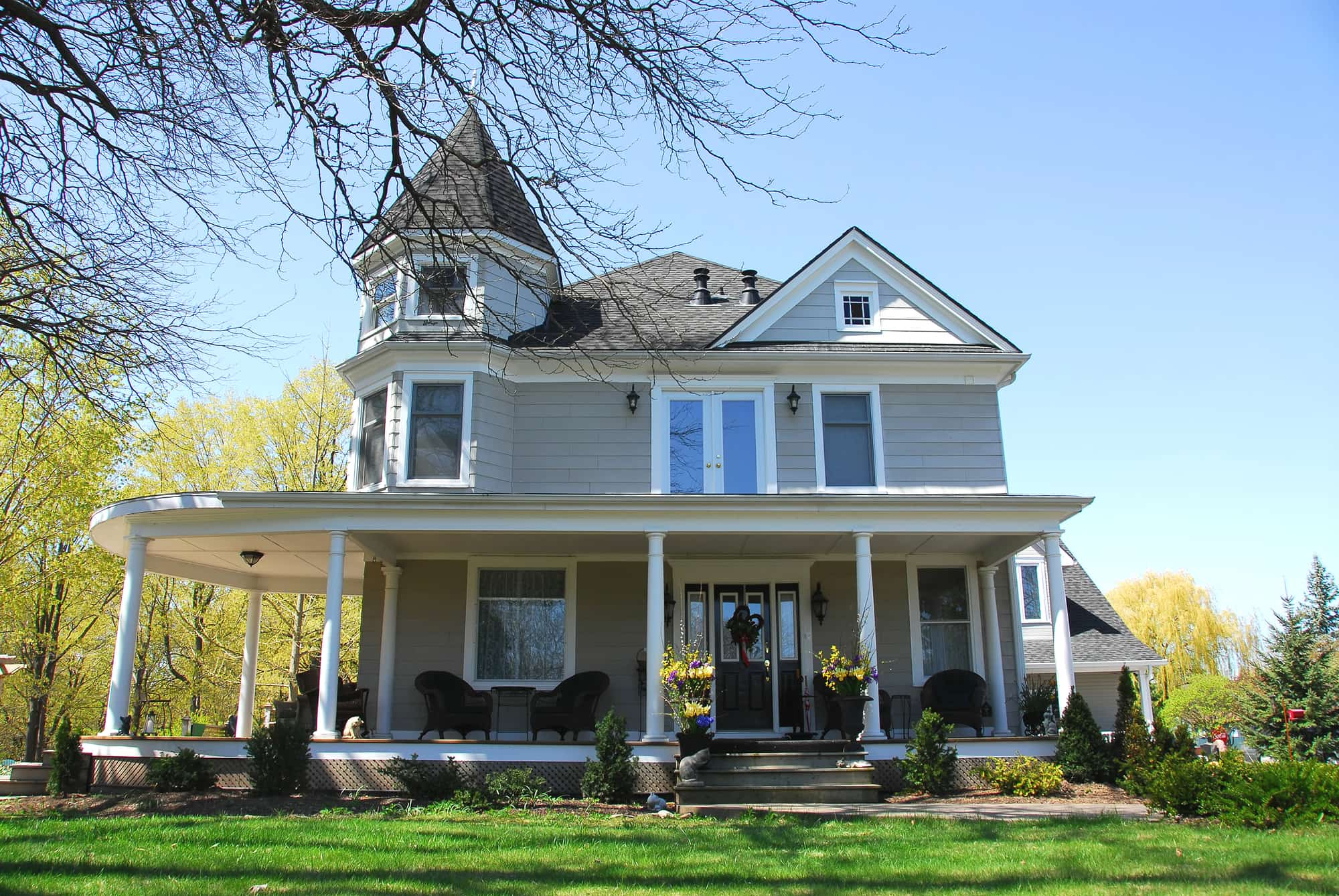The allure of Victorian houses, with their intricate millwork, tall windows, and elaborate trim, is undeniable. These architectural gems have a rich history and unique style that has captivated homeowners and architecture enthusiasts alike.
In this comprehensive guide, we’ll dive into the world of Victorian homes, covering their history, architectural styles, distinctive features, and the modern adaptations of Victorian designs. If you’re a seasoned or first-time homebuyer searching for these unique homes, we’re here to help.
History of Victorian Houses
Victorian-style houses, named after Queen Victoria, emerged during the mid to late 19th century. The advancement of building techniques during the Victorian era saw a surge in the construction of new homes, particularly in thriving cities like San Francisco.

Victorian architecture was more than a design trend; it was a response to the social, cultural, and technological changes happening at the time, as the upper classes sought to showcase their wealth and status through their residences.
Prominent architects of the time introduced a variety of architectural styles, each offering a unique take on Victorian design principles. The common types of Victorian houses include the Italianate style, Gothic Revival, and Queen Anne.
- The Italianate style, for instance, was influenced by medieval architecture and featured an asymmetrical shape.
- At the same time, the Gothic Revival was inspired by Gothic architecture and featured elaborate windows and steep roofs.
- Meanwhile, Queen Anne or Queen Anne Revival, arguably the most popular of all Victorian styles, was known for its detailed trim, bay windows, and diagonal boards, which lent a grand and ornate appeal to these homes.
Architectural Features of Victorian Houses
Victorian houses are renowned for their intricate architectural designs that blend beauty, grandeur, and sophistication. Let’s delve into some of the distinctive architectural features of these historic homes, from the exterior design and roofing to the elaborate windows and porches.
Exterior Design
The exterior design of Victorian homes is captivating. Characterized by their asymmetrical facades, Victorian-style homes often feature intricate millwork, ornate trim, and decorative elements that add to their charm. Gingerbread or detailed trim is a signature design of these homes.
In contrast, belt courses, or horizontal bands of trim, often break up the facades of Victorian-era houses, adding depth and interest to the architectural design.
The colors used on the exterior of Victorian homes are often vibrant and diverse. Many homeowners embrace color schemes that highlight these beautiful architectural elements. From soft pastels to deep, rich hues, color is a defining characteristic of Victorian exterior home design.
Roofing and Rooflines
The roofing and rooflines of Victorian houses define their overall character. Victorian-style homes often feature complex, steep gables or mansard roofs, with some boasting distinctive turrets.
Gabled roofs are typical in Gothic Revival homes, while flat roofs are common features of the Italianate style. On the other hand, the Queen Anne style is known for its irregular, turreted roofs.
These steep roofs and irregular rooflines add architectural interest and create additional living spaces, including upstairs bedrooms and master suites in attic rooms.
Windows and Doors
Victorian homes often feature various window designs, including tall, bay, stained glass, and sash windows. Bay windows are a common feature in Queen Anne Victorian homes, creating a sense of grandeur while allowing for ample natural light. Stained glass windows, a carryover from the Gothic Revival style, add color and intricate detail to these homes.
The doors of Victorian homes often serve as the centerpiece of the house’s exterior design. These doors are typically solid wood and richly decorated with intricate door hardware and glass inserts. Many doors feature detailed millwork, further enhancing the overall ornamental design of the house.
Porches and Verandas
The porches and verandas of Victorian house architecture serve as an extension of the living space, providing a place for relaxation and socialization. These outdoor spaces have decorative features like turned posts, spindles, and gingerbread trim, combining function and aesthetics in their design.
Interior Design of Victorian Houses
The exteriors of Victorian homes are highly detailed and ornate, and the interiors are no exception. Victorian homes are characterized by a unique layout, lavish ornamentation, and exquisite furnishings within their interior.

Interior Layout
Victorian houses are often asymmetrical, featuring a maze of rooms arranged off long corridors across multiple levels or around a central hall.
Some Victorian house plans incorporate closed-off rooms, reflecting the 19th-century upper-class desire for privacy. Each room serves a specific purpose, from drawing and dining rooms to libraries and conservatories.
Ornamentation and Decorative Elements
Victorian interior design is elaborate and ornate, with every element from intricate wallpapers to ceiling moldings and rosettes designed for luxury and opulence. The architectural design elements often extend to the home’s interior, with tall windows, elaborate staircases, and decorative fireplaces enhancing the home’s aesthetic appeal.
Furniture and Furnishings
The Victorian era used different furniture styles, from the Gothic Revival style emphasizing medieval architecture to the Arts and Crafts movement that reacted against industrialization.
Today, upholstery, curtains, and carpets with intricate patterns are still popular. Upholstered furniture, such as plush armchairs and sofas, are key features in the interiors, allowing for a more comfortable and luxurious seating experience.
The fabrics used for curtains and carpets are often vibrant, featuring bold and intricate patterns in rich colors such as deep reds, greens, and blues, with floral or damask designs.
Maintenance and Preservation of Victorian Houses
Given these homes’ intricate architectural elements, owning a Victorian house can be a labor of love. From exterior maintenance to interior care, every aspect needs careful consideration.
Exterior Maintenance
Preserving the unique architectural features of Victorian houses involves regular painting and repair of ornamental details. Issues such as peeling paint, rot, and weather damage can affect the home’s exterior appearance and structural integrity. Thus, these houses’ intricate woodwork and ornamental details require protective coatings to withstand the elements.
Proper drainage is essential as it prevents water from seeping into the foundation or basement, potentially causing structural issues over time. Thus, you should regularly clean gutters and downspouts to ensure smooth water flow. Consider installing gutter guards to prevent debris build-up and blockage.
Interior Maintenance
Preserving and restoring Victorian-era interior elements such as ornate woodwork and plaster moldings is essential in interior maintenance. To maintain the wood, protect it from moisture, sunlight, and physical damage. Apply a high-quality wood finish or sealant to protect the wood surfaces and prevent them from drying out or warping.
Additionally, plaster moldings such as ceiling roses and cornices should be regularly inspected for cracks or loose sections and repaired using appropriate plaster restoration techniques.
Adequate ventilation is also necessary to prevent moisture build-up, which can lead to mold and mildew. Ensure proper airflow by opening windows, using fans, or installing ventilation systems in areas prone to high humidity, such as bathrooms and kitchens.
Key Takeaways
With their rich history and exquisite architectural designs, Victorian houses have left an indelible mark on architectural history. These homes, characterized by their ornate exteriors and lavish interiors, reveal the profound cultural and social change that occurred in the Victorian era.
From their complex rooflines and intricate windows to the elaborate interior design and furnishings, Victorian houses exude grandeur. Despite the maintenance they require, the enduring appeal of Victorian homes remains unmatched, making them a cherished piece of architectural heritage.
Whether you’re looking to buy or sell Victorian homes, having an expert by your side can make all the difference. Contact a local eXp agent today or visit eXp Realty to explore your housing options and discover the Victorian home of your dreams.
FAQs: Victorian House
Curious about Victorian houses? Here are some commonly asked questions to provide more insight about this architectural style.
What makes a house a Victorian house?
A Victorian house is characterized by its ornate architectural details, asymmetrical design, steep gabled roofs, and multiple stories. It’s a style that was popular during the reign of Queen Victoria in the mid-to-late 1800s.
What are the Victorian home ages?
Since the Victorian era occurred during the reign of Queen Victoria between 1837-1901, these homes are typically between 120-190 years old.
How many floors did Victorian homes have?
Victorian homes typically had two or three stories, though some may have had additional attic or basement levels.
What is the cost of a Victorian house?
That can vary greatly, with the pricing of these houses depending on location, condition, size, and the level of historical preservation. On average, Victorian homes may range from hundreds of thousands to millions of dollars, with some rare or well-preserved properties commanding even higher prices.
What are 3 characteristics of Victorian design?
Victorian design is known for its ornate detailing, asymmetrical shape, and bright color schemes.
What state has the most Victorian homes?
California, particularly San Francisco, is known for its high concentration of well-preserved Victorian houses. Yet these homes can be found throughout the United States.
How do I know if my house is Victorian?
If your house features ornate detailing, has a steep roofline, and dates back to the mid-19th to early 20th century, it’s a Victorian house.
Are Victorian houses expensive?
Yes, Victorian houses can be expensive. Their price varies but is often more expensive due to their age, historical value, and architectural intricacy.
Why are Victorian houses so big?
The Victorian era was a time of prosperity and social status, and having a large house was seen as a symbol of wealth and success. Additionally, larger homes allowed for the accommodation of extended families and live-in staff during that era.





